Warm-up Drills
Warm up drills are essential to prepare young players for the physical and mental demands of soccer training. Attacking-focused warm-ups like cone dribbling help develop ball control and agility, while passing relays strengthen team communication and coordination. Circle runs build endurance, speed, and spatial awareness.
Incorporating these drills into your U14 soccer coaching sessions not only improves player performance but also fosters a positive learning environment where young athletes can thrive. Remember to provide constructive feedback throughout the warm-ups to keep players motivated and engaged in their development.
Cone Dribbling
The Figure-8 dribble around cones is a great attacking drill for U14 soccer players. Set up two cones approximately three yards apart and have the players dribble in a figure-eight motion around them. This drill improves ball control, footwork, and speed.
The Figure-8 cone dribbling drill is a great way to improve ball control, footwork, and speed for U14 soccer players.
Another effective cone dribbling drill is the Inside-outside dribble through cones. Place five to six cones in a straight line about one yard apart from each other. Have players alternate between inside and outside touches as they weave through the cones with their dominant foot, then repeat using their non-dominant foot. Emphasize keeping close control of the ball while maintaining speed.
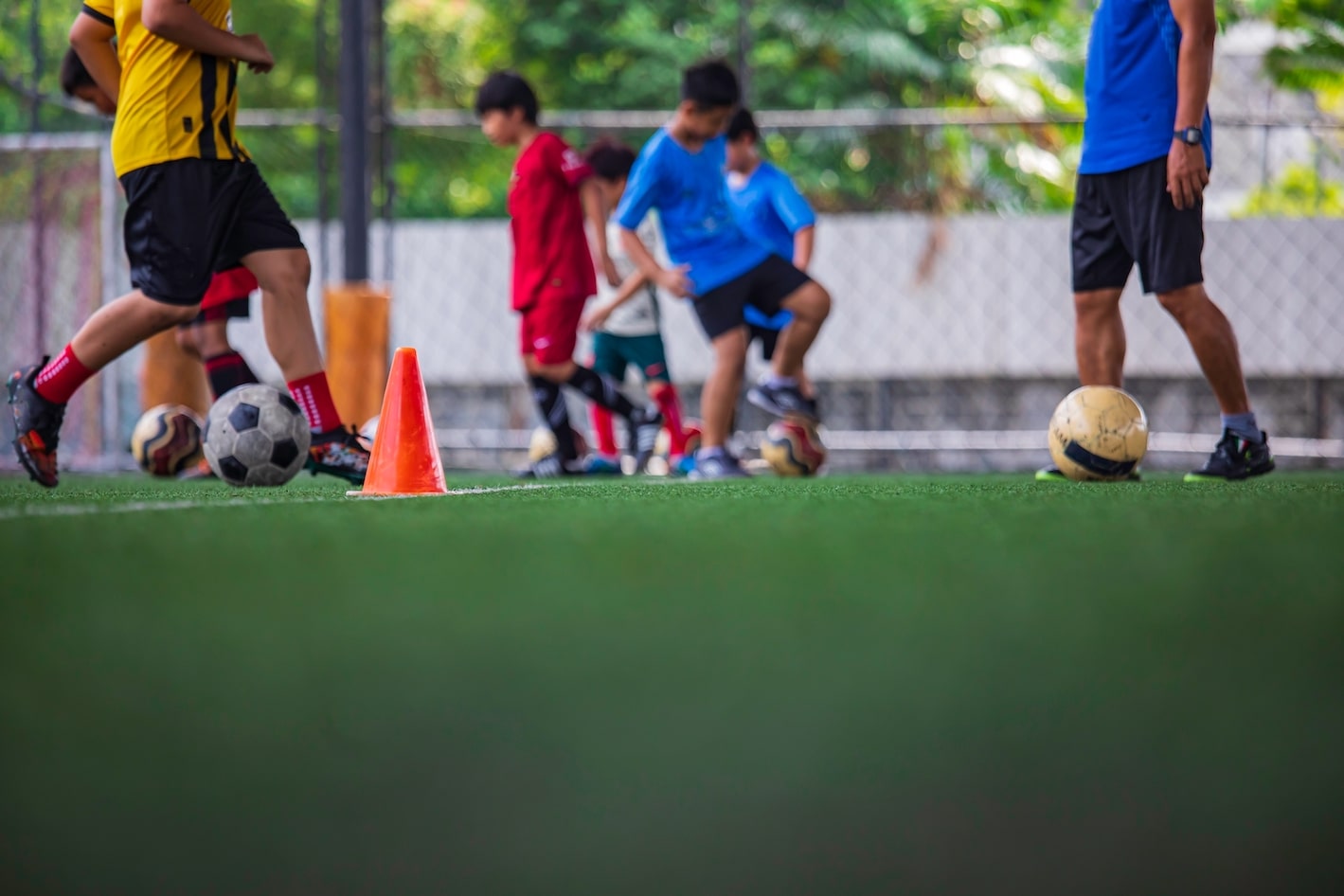
Finally, incorporate Dribble and turn at each cone as part of your U14 soccer drills repertoire to improve agility when changing direction during play. Set up four or five cones in a zig-zag pattern spaced out by two yards and have players perform an inside cut turn at each cone before moving on to the next one. Focus on quick feet movements while retaining tight control of the ball throughout this exercise for optimal results!
Passing Relay
One-touch passing drills can be done with multiple groups to increase the intensity of training sessions. To add pressure and simulate game situations, coaches can include a defender to pressure the receiver in each group. In addition, increasing the distance between players can create opportunities for longer passes and attacking plays.
These passing relay drills not only improve players' passing skills but also their decision-making abilities under pressure. Coaches can use these drills as a warm-up or as part of a larger training session focused on possession play. By incorporating these types of exercises into regular training sessions, coaches can help U14 soccer players develop their dribbling, attacking, and communication skills while building confidence on the field.
Circle Runs
Circle Runs are a great way to incorporate dynamic stretches and ball touches into soccer training sessions. Players can run around the circle while performing various stretches such as high knees, butt kicks, and lunges. To make it more challenging, coaches can instruct players to incorporate ball touches during the circle runs or alternate feet.
Furthermore, coaches can also partner up their players for mirror drills while running in circles. This drill helps with attacking and dribbling skills by having one player lead with the ball while the other follows their movements closely. The leading player then switches roles with their partner once they reach a certain point in the circle.
Incorporating Circle Runs into U14 soccer drills not only helps improve physical abilities but also assists in developing team communication and coordination skills among players. By shaking things up during training sessions with fun yet challenging exercises like these, coaches will be able to keep their teams engaged and motivated throughout each practice session!
Ball Control Drills
Ball control helps establish a great footwork formula:
1. The Figure Eight dribbling drill is a fun and challenging way to improve ball control skills for U14 soccer players. Set up cones in the shape of a figure eight and have players dribble around them with inside-of-the-foot touches, switching feet at each cone. Encourage players to keep their heads up while doing the drill to help develop awareness on the field.
2. The Wall Pass Drill is an excellent way for U14 soccer players to work on both ball control and passing skills simultaneously. Have two lines of players facing each other with one ball between them, about 10-15 yards apart from each other. Players pass the ball back-and-forth using only one touch per player until they reach the end of their line, then run around behind their line before joining it again at the beginning - this continues as long as desired or until an error occurs (such as dropping or mishandling the ball).
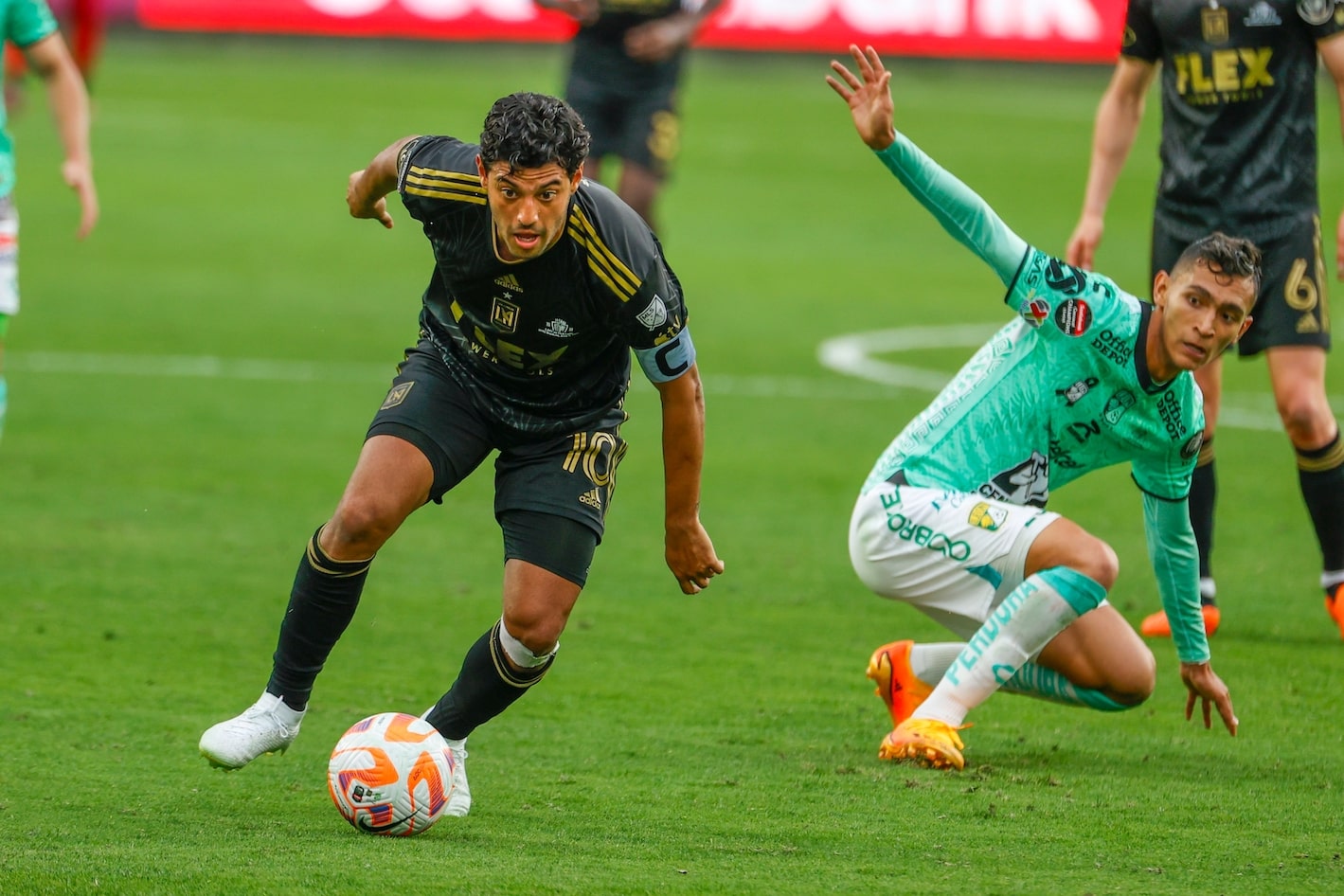
Triangle Passing
Objective of Triangle Passing drill:
The triangle passing drill is designed to enhance the passing skills and movement off the ball for players. It helps to develop quick, accurate and one-touch passes which are fundamental in building attacking play tactics.
Set up and equipment required for the drill:
To conduct this drill, you will need at least six cones to set up two triangles. The size of each triangle should be around 10 yards apart from each other. You'll also require enough soccer balls so that every player can have their own.
Step-by-step instructions for conducting the drill:
1. Divide your team into groups of three players.
2. Each group forms a triangle with one player on each cone facing inwards towards each other.
3. The exercise starts by having one player pass it across the triangle to another teammate who then passes it back using only one touch.
4. Players must always follow their pass and move quickly toward an open space within their respective triangles.
5. Encourage your team members to use different parts of both feet while passing accurately along with body positioning when receiving or distributing passes
6. After five minutes, change groups so that they can practice with new teammates.
Key Coaching Tips:
- Focus on technique over speed initially; accuracy is key
- Encourage communication between players within a group
- Make sure all players are constantly moving even when not involved directly in play
- Use positive reinforcement such as praise or high-fives after good plays
Two Touch Dribbling
Benefits of Two Touch Dribbling Drill:
How to conduct a Two Touch Dribbling Drill?
To conduct a successful two touch dribbling drill, coaches must first set up cones or markers spaced apart at appropriate intervals. Players can work individually or in pairs with one person dribbling while the other follows closely behind ready for their turn. The player takes only two touches before passing the ball off to their partner who repeats the process until they reach the end of the marked area.
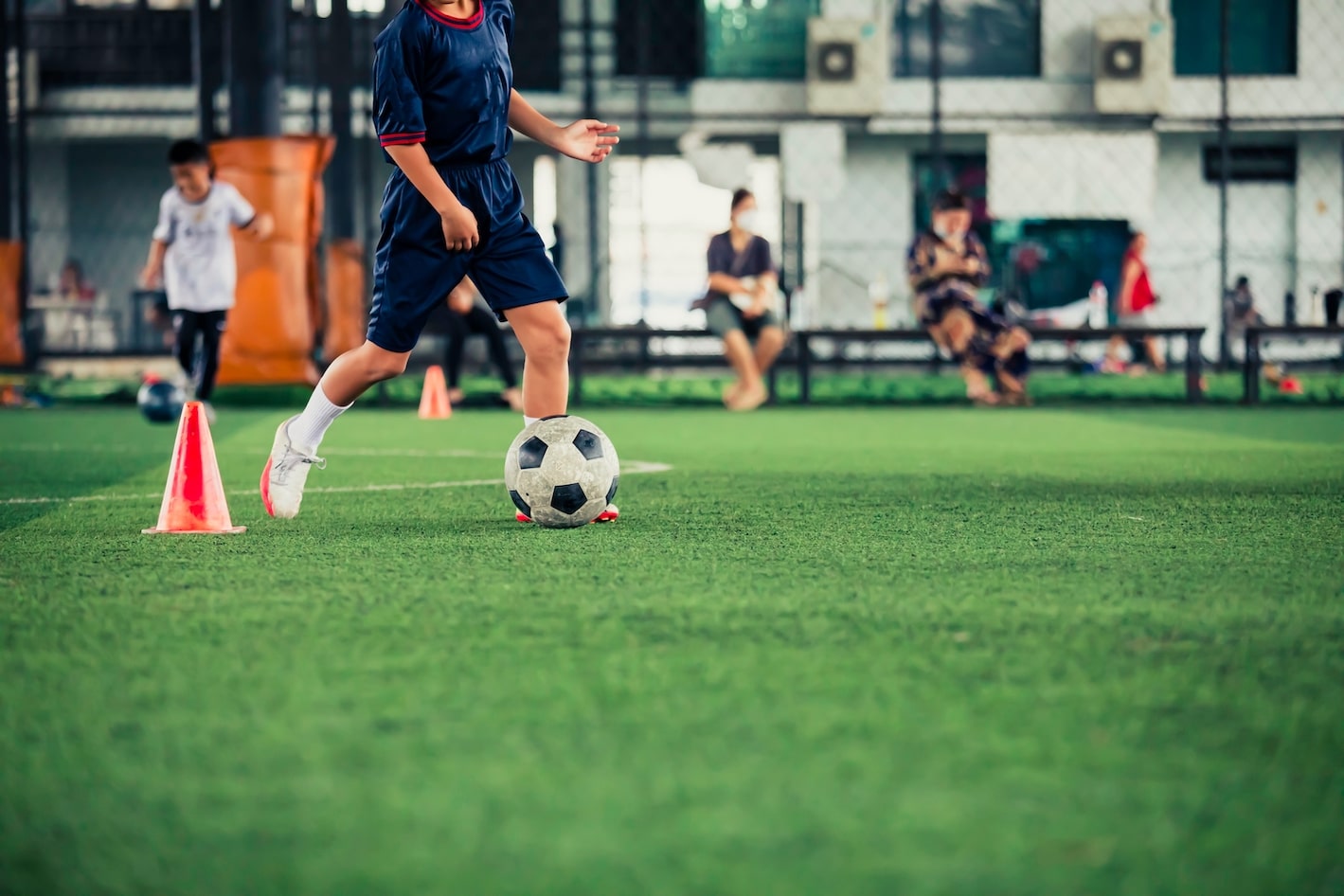
Variations of Two-touch dribbling drills:
There are several variations that can be incorporated into this drill such as increasing/decreasing space between cones/markers, introducing defenders or having players change direction midway through each repetition. Coaches should experiment with different variations depending on what aspects they want their team to focus on during training sessions.
Juggling
Juggling is a crucial aspect of soccer training, especially for U14 players. It helps improve ball control and coordination while boosting confidence on the field. Beginners should start by practicing basic juggling techniques, such as the "inside-inside" and "thigh-thigh-foot" methods. These can be done individually or with a partner to make it more challenging.
To progress from basic juggling techniques, players can move on to advanced variations like the "around the world" method or attempting to juggle with alternate feet. Coaches can also incorporate juggling competitions into practice sessions to keep things fun and engaging for their team while promoting healthy competition among players. Overall, making time for regular juggling practice will undoubtedly enhance your U14 soccer team's skills in no time!
Shooting Drills
Purpose of shooting drills:
1. Finishing is one of the most important skills in soccer and shooting with partners can help players improve their accuracy and speed. To carry out this drill, players should be paired up and take turns passing to each other before taking a shot on goal. Coaches should encourage quick movement off the ball, accurate passes, and precise finishing.
2. Target practice drills are great for improving a player's aim when shooting on goal. Set up targets in different areas of the net using cones or small goals, then have players focus on hitting those specific targets during shooting practice sessions. This will help develop precision when aiming at certain parts of the net during game situations and build confidence in players' ability to score from different angles on the pitch.
Shooting with Partners
Passing and shooting drills are a great way to hone the skills of your U14 soccer team. Encourage your players to communicate with each other as they pass the ball back and forth, before taking a shot on goal, thinking tactically. This will improve their spatial awareness and help them develop their accuracy when it comes to scoring.
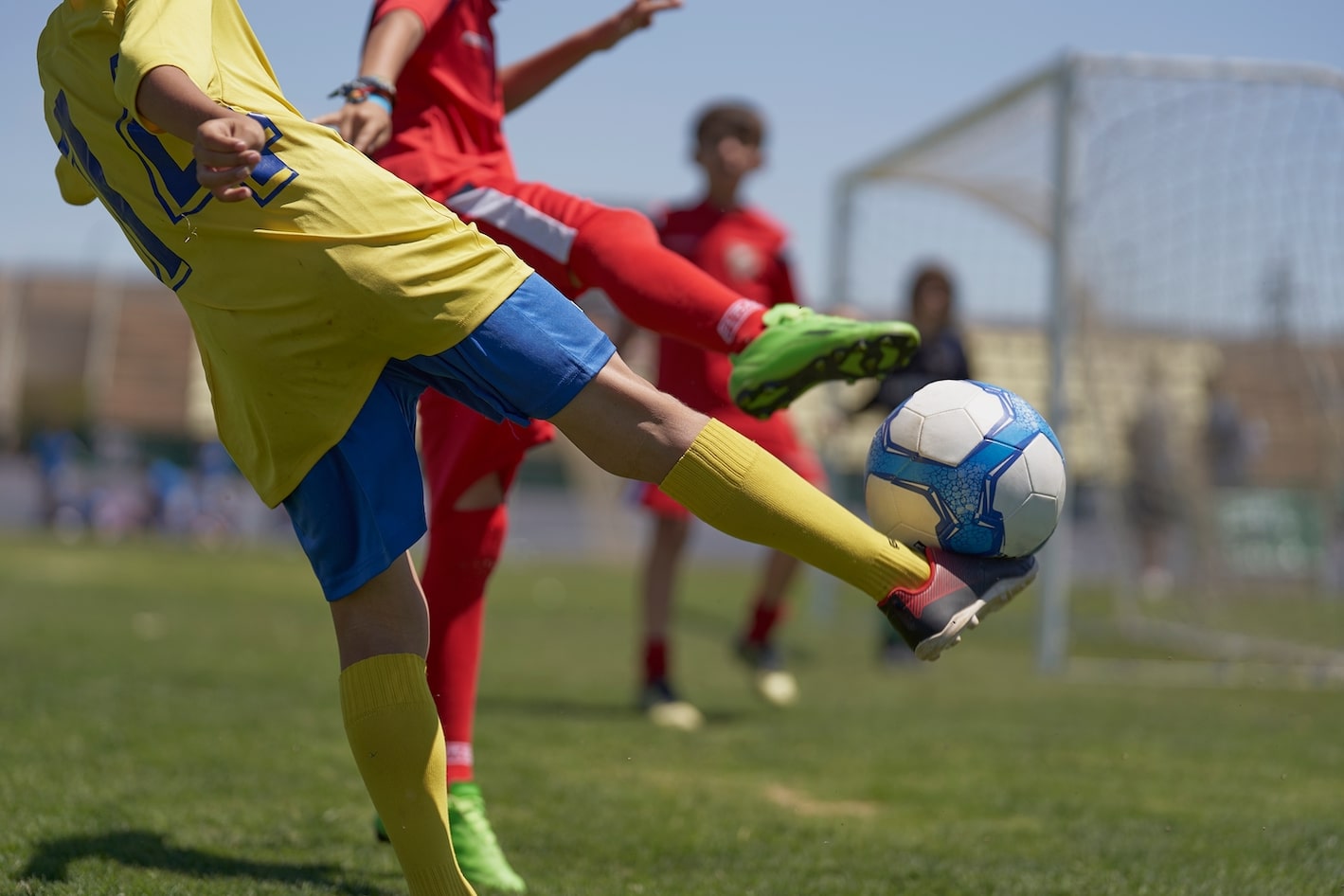
Curling shots can be tricky, but they're also incredibly effective if executed correctly. Have your players practice curling the ball around obstacles such as cones or even other players, in order to give them more confidence when it comes to game day.
Chipping over defenders is another important skill for young soccer players to master. Set up a drill where two defenders stand in front of an open goal - one jumps while the other stays grounded - and have your attackers try and chip the ball over both of them into the net. This will improve their technique as well as teach them how to read defensive plays effectively.
Target Practice
Looking to improve your U14s' shooting accuracy? Target practice is a great way to do so. Make use of the following drills and see your players become more confident in front of goal:
- Free Kick Targets: Set up targets in different areas of the goal and have players take free kicks aiming for them. This will help develop their accuracy and precision.
- Dribble and Shoot Through Cones: Create a set-up with cones that players must dribble through before taking a shot on goal. This drill helps improve ball control as well as shooting technique.
- Far Post Finishing: Place cones at one corner of the 18-yard box, then have players run towards it from various angles before finishing towards the far post. This drill improves shooting technique from difficult angles.
Remember to give feedback throughout these drills, pointing out what each player did well or could improve upon next time!
One on One with the Keeper
Cutting Inside to Shoot Near Post, Fakes and Feints to Beat Keeper, Driven Shots from Distance - these are some of the most effective techniques that a striker can use when facing an opposition goalkeeper. Here are some tips for mastering them during one-on-one sessions with the keeper:
- Cutting Inside to Shoot Near Post:
When dribbling towards goal on the flank, try cutting inside towards your stronger foot before shooting near post. This technique is especially useful in situations where you have more space on the wing.
- Fakes and Feints to Beat Keeper:
Faking shots or moves can deceive keepers who might be anticipating your next move. Try using a fake shot, dummy run or step over move before shooting past the keeper.
- Driven Shots from Distance:
Striking shots hard and low from distance might look easy but it's important for players to focus on their technique while practicing this skill. Ensure your body position is correct so that you strike through the ball well.
Remember that practice makes perfect! Incorporating these skills into regular drills will help young players develop into confident strikers who can score goals against any team they face.
Defensive Drills
When it comes to defensive drills for U14 soccer players, tackling and blocking are crucial skills that need to be developed. One effective drill is the "1v1 tackle" where a player tries to win possession of the ball from their opponent. Coaches can emphasize proper technique such as timing, footwork, and body positioning during this drill. Another useful exercise is the "block and recover" which teaches players how to defend against a shot while also being able to quickly transition into an offensive play.
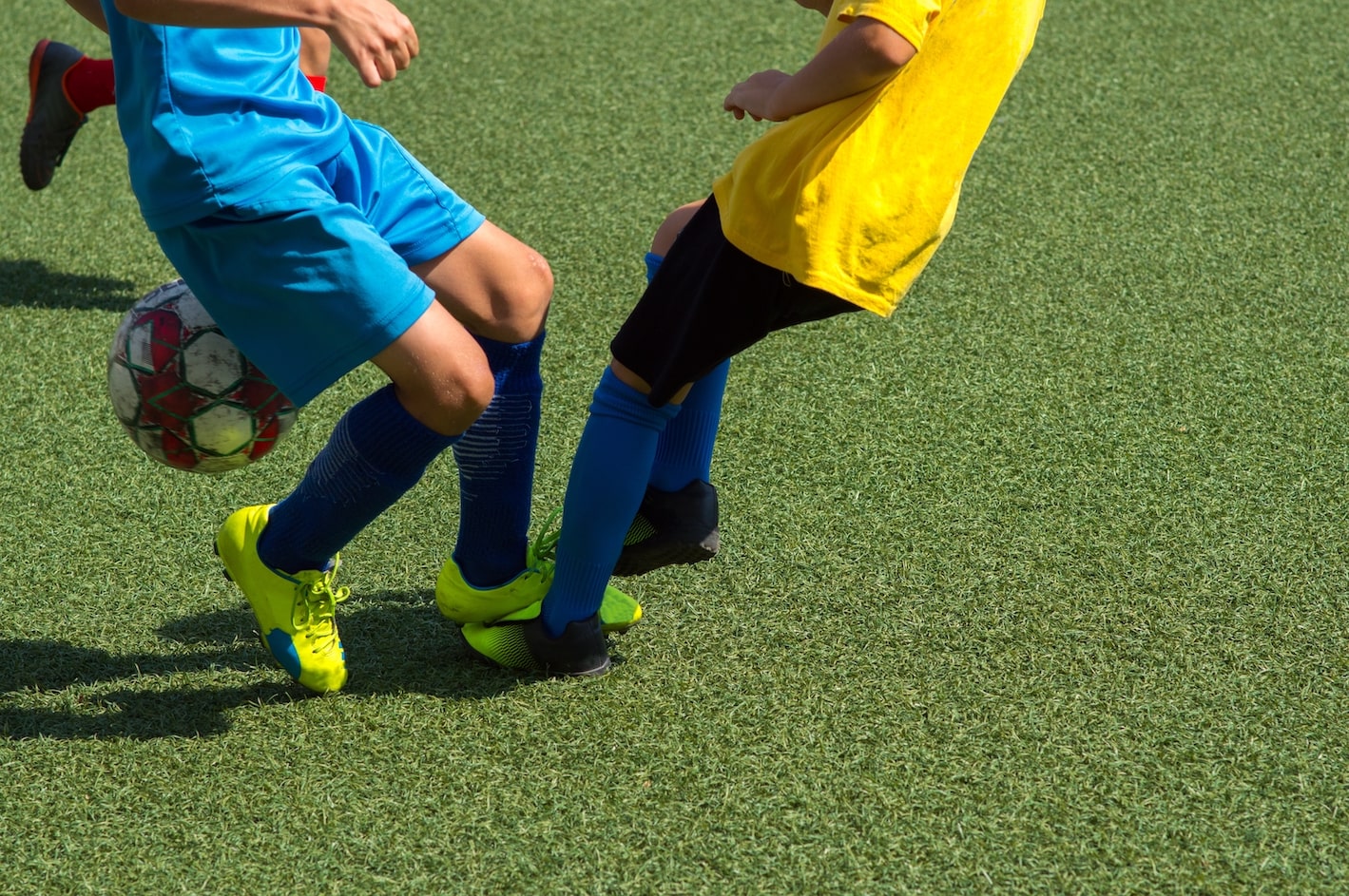
Positioning and marking are other essential aspects of defending in soccer that require specific drills, often within small sided games. The "shadow defending" drill helps players improve their marking skills by having them closely follow an opposing player without physically making contact with them. This exercise builds spatial awareness and requires quick reactions when transitioning between different opponents on the field. Another helpful drill is "zonal defending", where players learn how best to cover specific areas of the pitch as part of their defensive duties, improving overall team defense performance in game situations.
Tackling and Blocking
Proper body positioning during a tackle is crucial to prevent injuries and ensure a successful outcome. Coaches should teach players to keep the following points in mind when making tackles:
- Always lead with the shoulder, not the head or arms
- Keep eyes on the ball carrier's hips, as this will indicate their direction of movement
- Stay low and maintain balance by keeping feet shoulder-width apart
Teaching players to stay on their feet while blocking can increase their chances of success in attacking plays. Here are some tips coaches can use:
- Emphasize using hands to control and redirect opponents rather than pushing them away
- Teach players how to pivot their bodies while maintaining contact with their opponent
- Encourage quick movements that allow for changes in direction if necessary
Drills for improving timing of tackles should focus on replicating game situations. Some examples include:
- Using cones or markers to set up drills that simulate approaching an opponent at different angles
- Incorporating tackling exercises into small-sided games
- Practicing one-on-one tackle scenarios with teammates
Positioning and Marking
Effective communication is crucial when it comes to defensive positioning in soccer. As a coach, it's important to teach your players how to communicate with each other effectively during a game. This means emphasizing the importance of talking and encouraging your team members to call out instructions, such as who should be marking which attacker or where they should be positioned on the field.
When teaching players how to track opposing attackers without ball-watching, it's important to emphasize the use of peripheral vision. One drill that can help improve this skill involves having two players face each other while one player tries to move around them without being noticed by their opponent. Encouraging players not just look at the ball but also keep an eye on their opponents will lead them towards better defensive play.
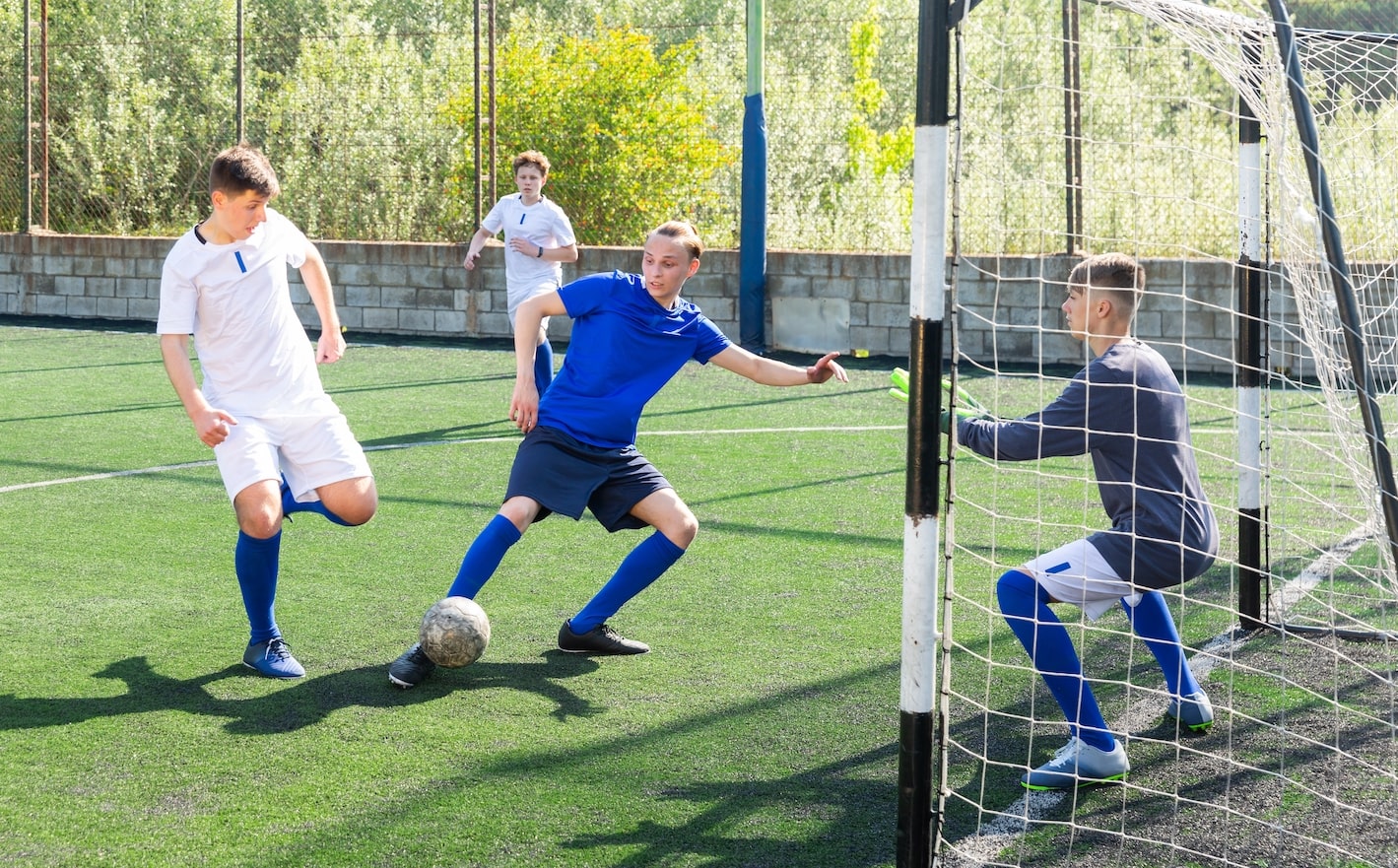
Improving one-on-one marking skills is critical for any defender in soccer. A useful drill for improving these skills involves splitting into pairs and having one player dribble towards their partner while trying to get past them within a limited space. The defending player must focus on staying close enough so that they are able take possession if there’s an opportunity whilst still avoiding committing fouls or giving away penalties - all whilst keeping good form and technique throughout play!
Defending Corners and Free Kicks
When it comes to defending corners and free kicks, coaches need to decide between zonal and man-to-man marking strategies. Zonal marking involves players being assigned an area of the field to cover rather than a specific player, while man-to-man is where each player has a designated opponent to mark. It's important for coaches to teach their players how to defend against set pieces as a unit, regardless of which strategy they choose.
Drills for practicing defending corners and free kicks can be incorporated into team training sessions. One effective drill is setting up cones in the penalty box representing attackers, with defenders tasked with clearing the ball out of danger using either zonal or man-to-man marking strategies. Another option is simulating game scenarios by having attacking players take turns crossing the ball from different areas on the pitch while defenders practice their positioning and communication skills.


Improve Your GameJust 1.99 p/m
Exclusive drills and sessions, get involved today!
- 100’s of Drills
- Coach to Camera Videos
- Sessions from Pro’s
- Industry Leading Advice
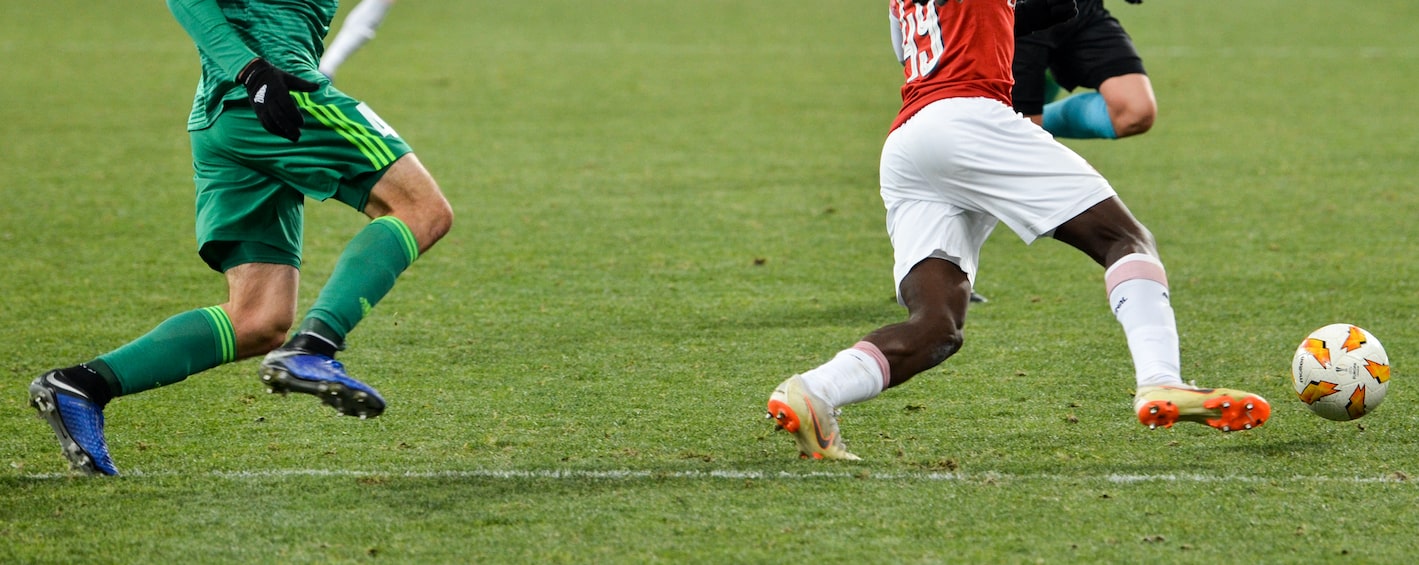
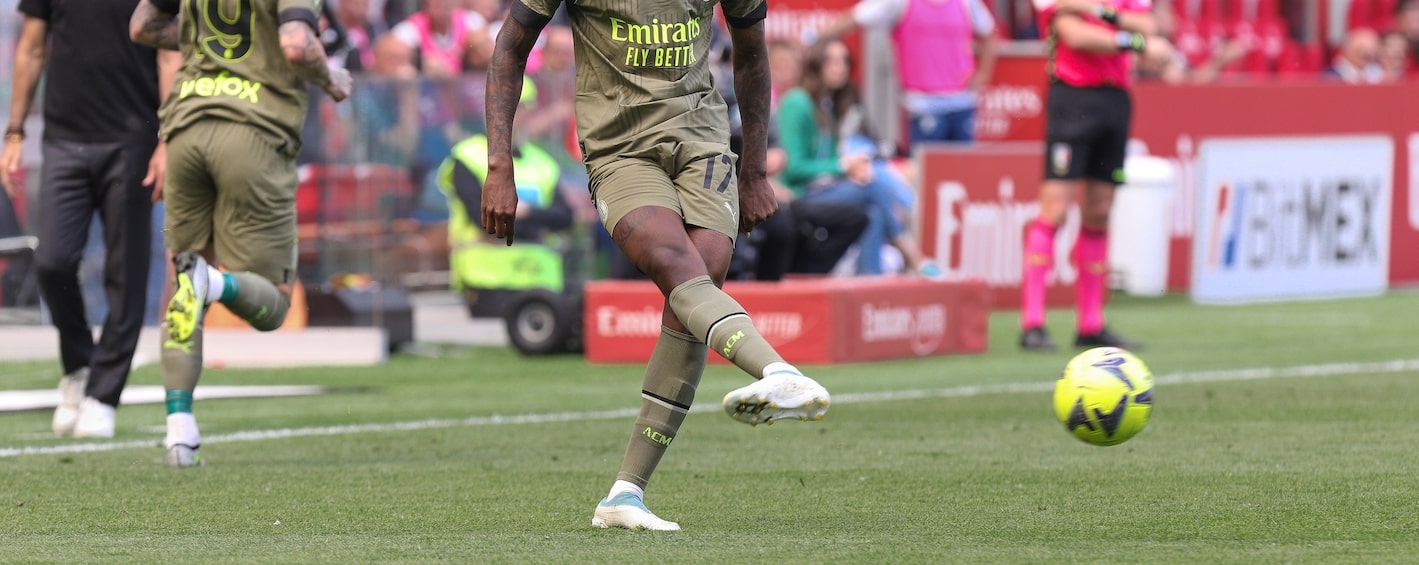
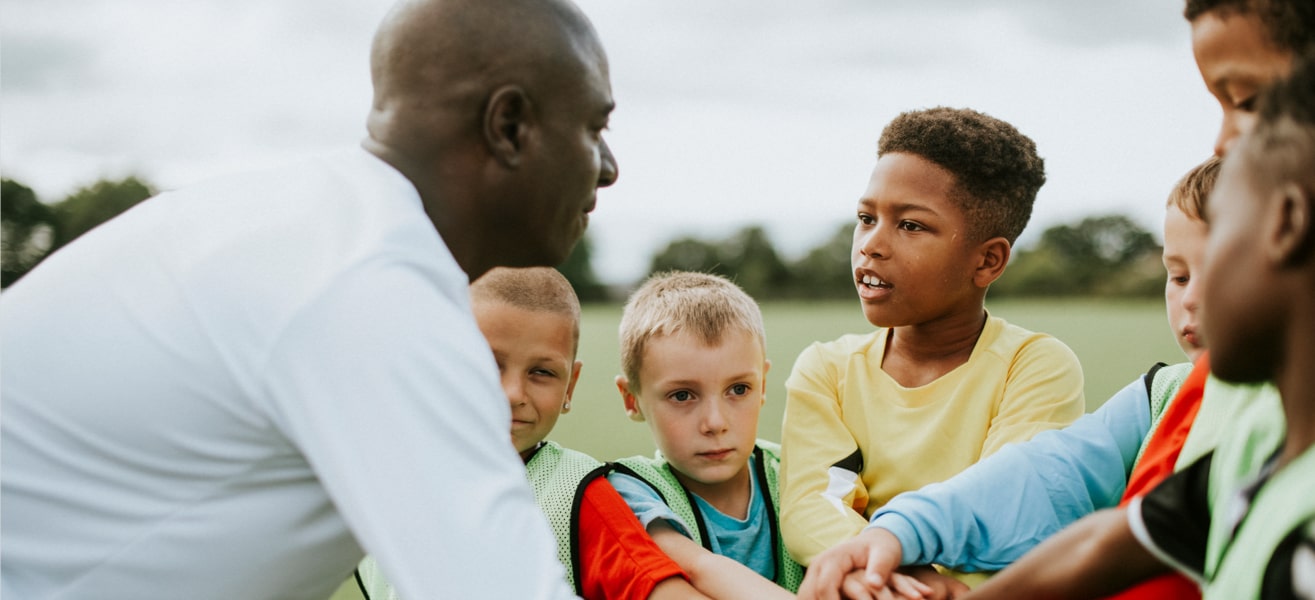
Cupello
Rethinking soccer coaching via our industry leading tools. Built to offer effective coaching development solutions for players and coaches of all levels.